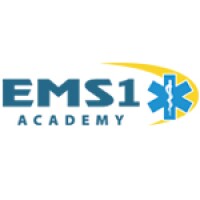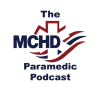The EMS1 Academy features “Myocardial Infarction,” a one-hour accredited course for EMS providers. Complete the course to learn more about both the typical and atypical presentations of acute myocardial infarction. Visit EMS1 Academy to learn more and schedule a demo.
Rapid sequence intubation has quickly become a relic of the past. In Episode #14 of the MCHD Podcast, Dr. Jeff Jarvis joins the hosts to discuss the Williamson County EMS experience using an airway bundle checklist for delayed sequence intubation (DSI).
The concept of DSI centers around resuscitating and properly preparing patients for intubation prior to administering paralytic agents. This is vital, as paralytics can often lead to significant hemodynamic consequences.
The core of this process is the use of ketamine to allow proper positioning, setup and pre-oxygenation prior to paralysis. Adequate pulmonary nitrogen washout directly translates clinically to additional time available to intubate before oxygen desaturation occurs. The entire procedure must be stepwise and methodical, with an emphasis placed on PEEP use, apneic oxygenation and proper bag valve mask application.
Delayed sequence intubation with Dr. Jeff Jarvis
On Episode #35 of the MCHD Podcast, flight paramedic Brandon Means joins the hosts to further discuss the finer points of ventilator management in the EMS environment.
Lung protective ventilation using low tidal volumes based on height as opposed to weight is one of the key topics addressed. For those familiar with the complex ARDSNet tidal volume tables, listen closely for a quick and easy way to approximate lung protective volumes without multiple clunky charts and graphs. This allows EMS providers to start with a ventilator management strategy that will prevent downstream complications.
Please don’t ignore the episode if your service doesn’t have the luxury of mechanical ventilators, all of the concepts discussed translate to EMS patients transported with a BVM and supraglottic airway in place. These episodes will leave you prepared to intubate and ventilate like an up-to-date pro.
How to approximate lung protective volumes
Tackling the difficult airway
Finally, the MCHD medical directors take a scenario based, deep dive into the finer points of tackling the difficult airway.













